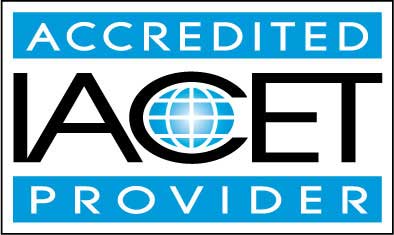Course Description
Comprehensive Guide to HIV: Understanding, Prevention, and Care
Welcome to this all-encompassing course on HIV: Prevention, Diagnosis, and Treatment. Through a systematic approach, our course aims to provide clear insights into a topic that often remains shrouded in myths and misconceptions. With current statistics, a plethora of examples, and detailed explanations, students will acquire a well-rounded understanding of HIV and its broad implications.
Why This Course Matters
The distinction between HIV (Human Immunodeficiency Virus) and AIDS (Acquired Immune Deficiency Syndrome) is often misunderstood, resulting in unwarranted fears and stigmas. By comprehensively understanding these conditions, not only do patients benefit, but also their families, friends, and caregivers, fostering a supportive environment for those affected.
Course Highlights
-
The Fundamentals of HIV: Dive deep into what HIV is and how it differentiates from AIDS, debunking common myths and misconceptions.
-
HIV’s Impact on the Body: Grasp how the virus interacts with the human immune system, and the physiological changes it induces.
-
Symptoms and Diagnostics: Explore the signs that might indicate HIV infection and the modern diagnostic methods employed by healthcare professionals.
-
Prevention is Better Than Cure: Delve into actionable methods to prevent HIV transmission, focusing on industry-recommended precautions and understanding the increased risk factors associated with certain lifestyles.
-
Treatment Modalities: From globally recognized antiretroviral therapies to alternative treatments and nutritional supplements, discover the myriad ways HIV is being managed today.
-
Living Positively with HIV: Understand the dietary needs, lifestyle habits, and coping mechanisms that can help boost the immune system and enhance the quality of life for those diagnosed.
-
Transition to AIDS: Unravel the factors leading to the progression of HIV to AIDS and current research endeavors aimed at slowing this progression.
-
Breaking Stereotypes: Equip yourself with credible resources to challenge misconceptions about HIV and advocate for an informed and compassionate societal perspective.
Course Breakdown
- HIV Basics: Set a strong foundation by understanding the core aspects of HIV.
- How Does HIV Affect the Body?: Learn the physiological effects of the virus.
- Symptoms Associated With HIV: Identify potential warning signs.
- How an HIV Diagnosis Is Made: Discover the various diagnostic procedures.
- Preventing HIV Infection and Transmission to Others: Understand and champion preventive measures.
- Traditional HIV Treatment Options: Gain insight into globally-recognized treatment regimens.
- Alternative Medical Treatments for HIV: Explore beyond traditional medicine.
- Living With HIV: Embrace the measures for a healthy life post-diagnosis.
- Preventing HIV-Related Illnesses: Ward off secondary infections and complications.
- What Is My Prognosis?: Delve into the long-term outlook for those with HIV.
- Coping With HIV: Strategies and resources for mental and emotional well-being.
Who Should Enroll
This course is indispensable for anyone seeking a comprehensive understanding of HIV, especially those recently diagnosed, their families, healthcare professionals, educators, or anyone aiming to challenge the status quo surrounding HIV and AIDS.
In an era where information is power, we invite you to become empowered, informed, and compassionate. Let's build a world where understanding trumps fear, and care surpasses judgment. Join us today and make a difference, one lesson at a time.
- Completely Online
- Self-Paced
- Printable Lessons
- Full HD Video

- 6 Months to Complete
- 24/7 Availability
- Start Anytime
- PC & Mac Compatible
- Android & iOS Friendly
- Accredited CEUs

Learning Outcomes
- Define the difference between HIV and AIDS, including the progression and stages of each condition.
- Identify effective strategies for preventing the transmission of HIV and describe various symptoms and treatments available.
- Describe the emotional and mental challenges faced by individuals diagnosed with HIV and propose strategies for effective coping and support mechanisms.
- Identify the phases of HIV infection and explain their impact on the immune system's functionality, including T-cells and macrophages.
- Analyze changes in the lymphatic system related to HIV, such as swollen lymph nodes, by explaining their role and response in fighting viral infections.
- Identify and describe at least three common symptoms associated with early stages of HIV infection, including their potential variations in severity and duration.
- Define the sequence and purpose of diagnostic steps for confirming an HIV infection.
- Identify common laboratory tests used to diagnose HIV and explain their significance.
- Identify and describe the main modes of HIV transmission and procedures to mitigate risk, including protective measures, during sexual activity and healthcare practices.
- List and explain universal precautions in healthcare settings to prevent HIV transmission, demonstrating appropriate use of personal protective equipment and waste disposal.
- Demonstrate understanding of how traditional HIV medications work by explaining their roles in hindering virus replication and managing symptoms.
- Identify key factors in selecting appropriate HIV drug regimens, such as CD4 counts and potential side effects, to tailor treatment effectively.
- Recognize different forms of alternative and complementary medical treatments for HIV and describe their potential benefits and limitations.
- Demonstrate mastery of lesson content at levels of 70% or higher.
Assessment Guide
| Assessment | Points |
|---|---|
| An Introduction | 1 points |
| Lesson 1 Assignment | 2 points |
| Lesson 1 Exam | 8 points |
| Lesson 2 Activity | 1 points |
| Lesson 2 Exam | 9 points |
| Lesson 3 Activity | 1 points |
| Lesson 3 Exam | 10 points |
| Lesson 4 Exam | 10 points |
| Lesson 5 Assignment | 2 points |
| Lesson 5 Exam | 10 points |
| Lesson 6 Exam | 9 points |
| Lesson 7 Exam | 7 points |
| Lesson 8 Exam | 10 points |
| Lesson 9 Assignment | 2 points |
| Lesson 9 Exam | 9 points |
| Lesson 10 Exam | 10 points |
| Lesson 11 Assignment | 2 points |
| Lesson 11 Exam | 10 points |
| The Final Exam | 50 points |


